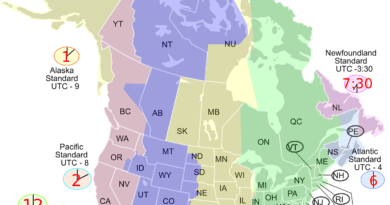Time Zone
Embrace the spirit of adventure as we explore the intriguing concept of “Time Zone”. Every globetrotter knows, as you jaunt across different continents and cities, you’re not only traversing physical distances, but you’re also leaping across invisible lines slicing the world into twenty-four standard time zones. Navigating time changes is a challenge in itself, an extra thrill for committed voyagers. This article will not only soothe your wanderlust but educate you about the fascinating mechanisms of time zones as they relate to your travels. Prepare yourself for an exciting journey through time and space, as this knowledge will further enrich your alluring global ventures.

Understanding Time Zones
In our fast-paced world, where interconnectivity shapes personal interactions and global industries, understanding time zones is more than just a geographical curiosity; it’s an integral part of our ongoing global conversation. Let’s dive into the concept of time zones and figure out why it matters to you.
Definition of Time Zone
A time zone is a region of the globe where the same standard time is used. The planet is divided into 24 time zones, each approximately 15 degrees of longitude wide, based on the Prime Meridian (also known as Greenwich Mean Time). The idea is that within each zone, time would be the same for everyone, making scheduling and synchronization possible across vast distances.
Significance of Time Zones
Recognizing the importance of time zones is akin to appreciate the organization in what otherwise could be a chaotic world. Global time zones allow us to establish a degree of normalcy and order, irrespective of location. Moreover, time zones influence everything from international business to travel, communications, and even technology, underscoring their importance in our ever-connected world.
History of Time Zones
Understanding time zones isn’t complete without a look at their history, which represents a fascinating interplay between geography, politics, and human innovation.
Start of Standard Time
Long before the concept of standard time, every town and city operated on its local solar time, which made coordination challenging. The introduction of railways, which often covered large longitudinal distances, highlighted the need for a standard time system. To address this, British rail companies started using Greenwich Mean Time in the mid-19th century, marking the beginning journey towards global time standardization.
Introduction of Global Time Zones
On November 18, 1883, the United States, Canada, and other regions adopted Standard Time, dividing the continents into four time zones. This initial system was refined at the International Meridian Conference in 1884, where the Prime Meridian was established, and the 24-hour global time zone system was proposed.
Changes and Adjustments Over Time
Since their inception, time zones have evolved to reflect political boundaries, economic considerations, and societal needs, resulting in the intriguing layout we see today. For instance, some large nations like China and India have chosen to use a single time zone across their vast territories. These and other adjustments underline how time zones, while grounded in geography, are also shaped by human dynamics.
Global Time Zone System
Any exploration of time zones would be incomplete without examining the global system that underpins it all.
Number of Time Zones Globally
Though we often hear of the 24 time zones based on each hour of the day, the actual number is more than this due to several factors including political decisions and geographical peculiarities. As of current, there are about 38 officially recognized time zones globally.
Geographic Division of Time Zones
Each time zone is ideally 15 degrees of longitude wide, though political and practical considerations often result in deviations. Adjacent time zones are generally one hour apart, reinforcing the reality that while time is uniform, our perception and usage of it vary based on location.
Role of International Date Line
The International Date Line, an imaginary line that runs predominantly through the Pacific Ocean, plays a vital role in the global time zone system. When you cross this line, you ‘lose’ or ‘gain’ a day, depending on the direction of your travel – ensuring that everyone, regardless of their position on the globe, shares the same calendar day.
Daylight Saving Time
Daylight Saving Time (DST) is another key concept to grasp in the study of time zones, showcasing humanity’s ongoing attempts to make the best use of time.
Concept of Daylight Saving Time
Daylight Saving Time is the practice of advancing clocks during warmer months to extend evening daylight. The idea is simple; by moving an hour of daylight from the morning to the evening, people can enjoy more daylight during their active hours.
Countries Implementing Daylight Saving
Quite a few countries implement DST, including the United States, Canada, and parts of Europe and Australia. However, it’s not a universally accepted system; many countries, mainly in Africa and Asia, do not observe it.
Benefits and Controversies of Daylight Saving
DST has its proponents, who argue that it saves energy and promotes active lifestyles. Critics, however, argue that the energy savings are marginal, at best, and that DST can lead to health issues and general confusion. Such ongoing debates remind us that while the clock never stops, our conversations about time remain ever-evolving.

TimeZone Aberrations and Anomalies
Alongside their practical benefits, time zones also generate some fascinating anomalies and aberrations.
Non-standard Timezones
Some time zones don’t function on the hour; instead, they function on the half-hour or even the quarter-hour. For example, Indian Standard Time is 5 hours and 30 minutes ahead of UTC, and Nepal Standard Time is 5 hours and 45 minutes ahead.
Countries with Multiple Time Zones
Large countries like Russia, the United States and Australia have multiple time zones. For instance, the continental U.S. has four time zones: Eastern, Central, Mountain, and Pacific. This diversity of time across a single nation poses its unique challenges for inter-state coordination and travel.
Oddities in Time Zone Borders
Time zones’ borders can often defy logic due to geopolitical decisions. China, spanning five geographical time zones, operates on one standard time. Conversely, tiny countries like Kiribati extends across the International Date Line, creating some interesting anomalies.
Determining Time Zone Differences
While time zones bring order, they can also bring confusion, but don’t worry, calculating time differences isn’t as complicated as it might seem.
How to Calculate Time Zone Differences
The key to calculating time zone differences is understanding GMT or UTC, the baseline from which all other time zones are derived. Once you know the GMT offsets of two places, you can simply subtract one from the other to find the time difference.
Tools and Resources for Time Calculation
Several tools and resources are available to help you. Various apps and websites can provide instant time zone conversions, making it quick and easy to synchronize your activities across multiple time zones.

Impact of Time Zones on Travel
The ability to leap across time zones has forever changed both the practicalities and the possibilities of travel.
Jet Lag and Its Management
One major impact of crossing time zones is the experience of jet lag, the disruption of the body’s internal clock. To manage jet lag, experts recommend adapting to local meal and bedtimes, staying hydrated, and getting plenty of sunlight upon arrival.
Planning Your Schedule Across Time Zones
Planning your schedule over multiple time zones requires some foresight. It’s crucial to factor in time differences, especially for business meetings, to ensure smooth interaction. Utilizing digital tools for time calculations can be greatly beneficial.
Time Zones and International Business
In an increasingly globalized economy, time zones have a direct impact on international business operations.
Critical role of Time Zones in Global Collaboration
Time zones shape international collaboration, dictating when businesses can communicate and cooperate in real-time. Coordinating schedules across time zones is a common challenge for global teams, but it also creates an opportunity for near-continuous operations.
Challenges for Businesses Across Different Time Zones
Managing a global enterprise across different time zones introduces various challenges, including maintaining clear communication, working out suitable meeting times, and taking into account the work-life balance of employees in different regions. These challenges can be mitigated with robust planning and effective use of technology.
Importance of Time Zones in Technology
More than ever before, time zones play a critical role in the realm of technology.
System Time and Computer Clock
Computers and operating systems use an internal clock, or system time, to keep track of time. This includes an awareness of the relevant time zone, enabling accurate timestamping and scheduling of tasks.
Internet, GPS and other technology based on Time Zones
Many technology-related elements depend on time zones for their operations, including the internet, Global Positioning Systems (GPS), and various other digital platforms and services. Accurately accounting for time zones ensures the proper functioning and synchronization of these global systems.
Adapting to Different Time Zones
Elements like travel, work, and even personal relationships can regularly have us crossing time zones, making adaptation strategies crucial.
Tips for Adjusting to New Time Zones
Adapting to a new time zone generally involves resetting the body’s internal clock. Simple strategies like adjusting your sleep and meal schedule to match the new destination, getting sunlight, and avoiding caffeine and alcohol, can help with this transition.
Dealing with Time Zone Confusions
Time zone confusion can happen to the best of us. However, by familiarizing ourselves with the core concepts of time zones and leveraging digital tools like time zone converters, we can significantly mitigate this confusion.
Cultural Adaptation to Time Zone Differences
Finally, beyond the technicalities, adapting to time zones also calls for cultural sensitivity. Respecting ‘awake’ and ‘sleeping’ hours when communicating globally, for instance, is a small but crucial step towards thoughtful global engagement.
Understanding time zones allows us to navigate our globally connected world with more confidence and ease. Through patient learning and a sense of curiosity, the remarkable story of how humanity tamed time can become something you expertly navigate in your travels, your work, and your global connections.




